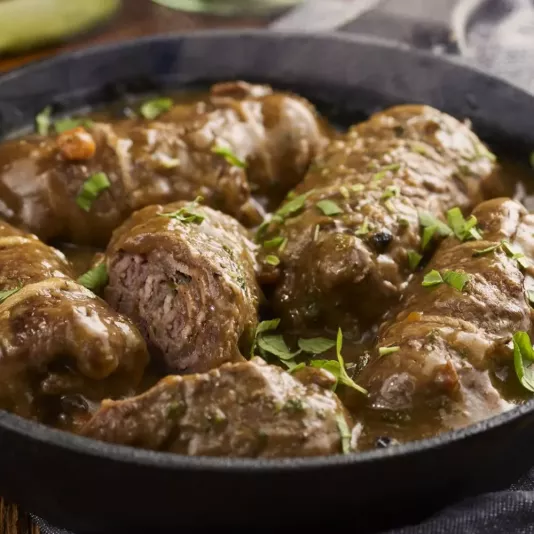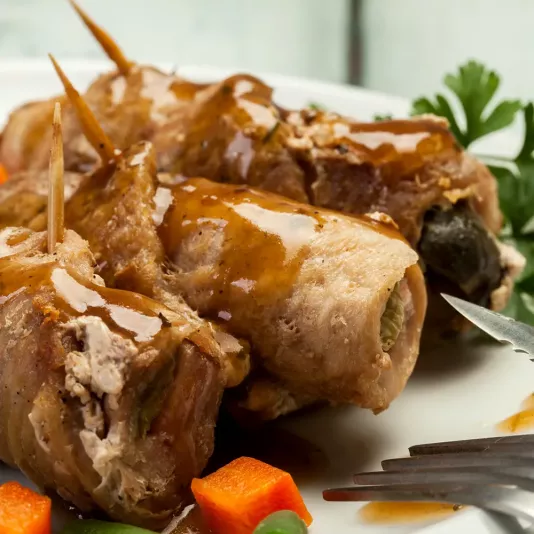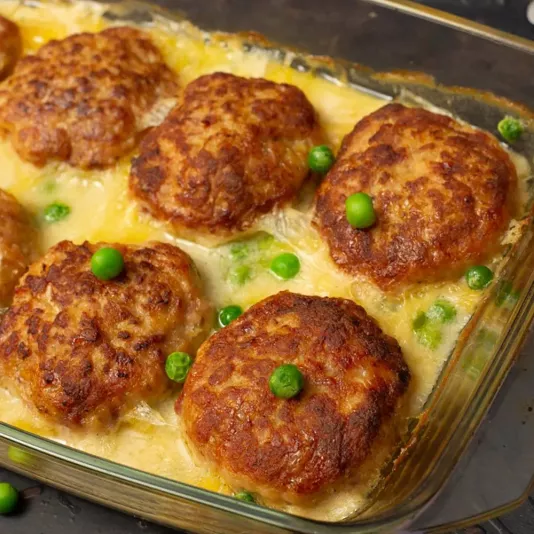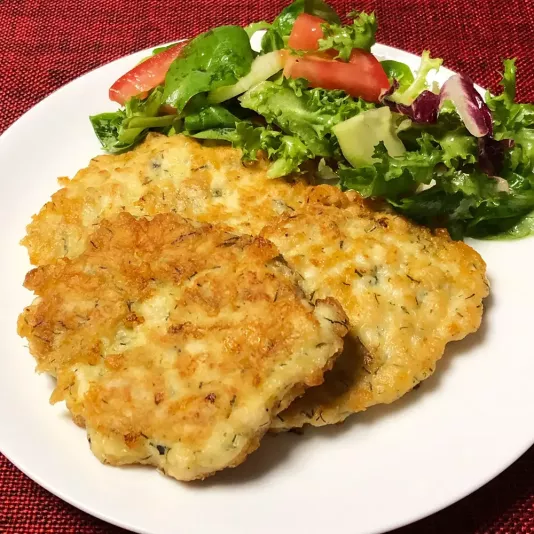Cutlets
Cutlets are a versatile homemade dish that I’ve been cooking for decades and still keep discovering new serving ideas. With meat, fish, vegetables, or grains – they’re always appropriate. In my experience, the key is balancing the moisture and density of the mince. If you add too much liquid, the cutlets lose shape; without it, they become dry. I always use onions because they add natural sweetness and juiciness. Baking in the oven instead of frying helps avoid excess fat, but the pan creates that unique crust I consider the hallmark of real homemade cutlets. I’ve noticed that different meats behave differently during cooking: chicken needs tenderness, pork prefers a bit of moisture, and beef benefits from a touch of fat. That’s why I never stick to one recipe but always adapt – it’s what makes cooking alive
Recipes for Cutlet Dishes
Over the years of cooking, I’ve learned to feel when the mince has the right texture. If the meat is fresh and not over-ground, the cutlets turn out juicy even without much fat. I often mix two kinds of meat – like beef and pork, or chicken and turkey – to get a soft, balanced taste. Bread soaked in milk adds tenderness, and the egg holds the shape during frying. I add salt at the end of mixing so the mince doesn’t release juice too early. Before shaping, I let it rest for 20-30 minutes – this prevents cracking. I fry first over high heat to form a crust, then reduce the heat and finish cooking covered. For baking, I use 180°C (356°F) and never exceed 25 minutes. This ensures tenderness without drying out. If you need to prepare in advance, cooled cutlets can be stored in the refrigerator for up to two days and then reheated in the oven – they stay almost as fresh as newly made
Secrets of Juicy Cutlets
Juiciness always begins with the right mince composition. I’ve found that the best ratio of meat to bread is about two to one. Milk or cream slightly softens the texture, and finely chopped onions add natural moisture. It’s equally important not to overmix the mince – if mixed too long, it becomes sticky and the cutlets turn tough. I always chill the mince before frying to stabilize the proteins, so the patties hold their shape. If I add herbs or spices, I do it last – the aroma stays fresher. For an even crust, I use a thick-bottomed pan and heat it gradually. From experience, I know that rushing at this stage ruins the flavor even of the best mince. To retain moisture, I sometimes add a little grated raw potato or a spoonful of sour cream – it helps prevent dryness. Such small details create that perfect juiciness everyone strives for
Varieties of Cutlets
Cutlets are not only meat-based. I often make vegetable versions – from potatoes, carrots, beets, or cabbage. They’re perfect as a side dish or a light dinner. With grains like buckwheat or rice, they become hearty meals even children love. Fish cutlets require gentler heat since fish protein is delicate and easily overcooked. I use low heat and a short frying time to keep them juicy. Chicken cutlets become tender if you add a little butter inside. Such small tricks help diversify the menu without losing quality. Over the years, I’ve realized that cutlets are not just one dish but a whole world of flavor and texture combinations. Each type needs its own approach: different grind level, different spice aroma, different moisture. That’s what makes them so flexible and fascinating even for experienced cooks
Common Mistakes When Cooking Cutlets
Many think the main thing is to fry quickly. In fact, haste is the worst enemy of cutlets. If you place them on a pan that isn’t hot enough, they’ll lose juice before forming a crust. Too high heat, on the other hand, burns the outside while leaving the center raw. I always recommend heating the pan first, then slightly reducing the heat before frying. Another mistake is over-breading: a thick breadcrumb layer blocks heat, leaving the inside raw. It’s better to use a thin coating or skip it altogether. Also, don’t flip them too often – it ruins the structure. In my experience, the best results come when each cutlet has its own calm time on the pan. Another common mistake is oversalting the mince: add salt gradually, tasting as you go, or make a small test cutlet first. This helps adjust not only flavor but also texture
How to Serve Cutlets
Serving plays as big a role as cooking itself. I like to arrange the cutlets on a warm plate next to mashed potatoes or stewed vegetables. For festive occasions, I add a light sour cream sauce with dill or garlic – it enhances the homemade taste. If the cutlets have cooled, it’s better to reheat them in the oven, not the pan, to avoid drying out. From experience, I know that even a simple dish looks elegant if you pay attention to the details. A small sprig of greens, a neat arrangement on the plate, a pleasant aroma – and an ordinary dinner becomes a cozy ritual. I always use warm plates because cold ones instantly cool the cutlets. For takeout or work lunches, I love making cutlet sandwiches with rye bread and lettuce leaves – it’s convenient and tasty. Cutlets are never out of place: they can turn an ordinary day into the feeling of home



